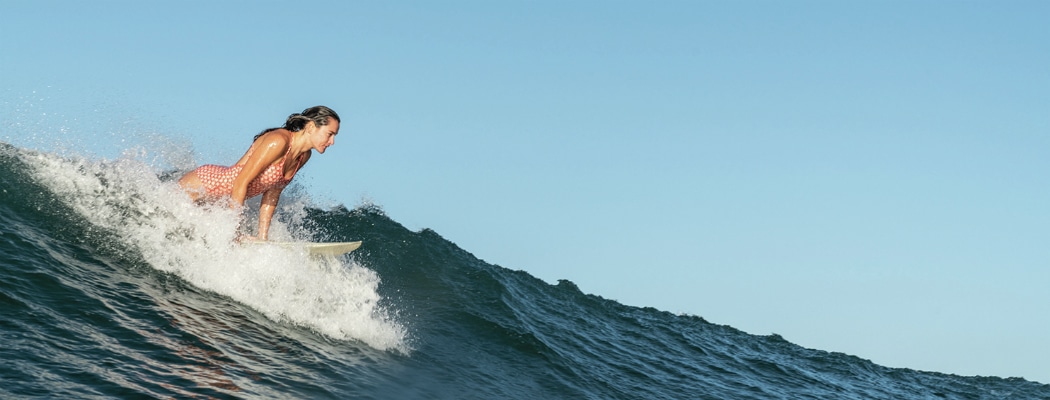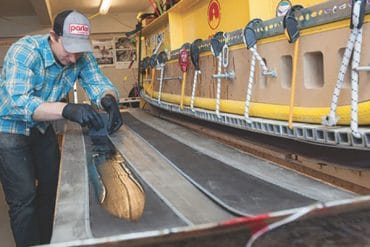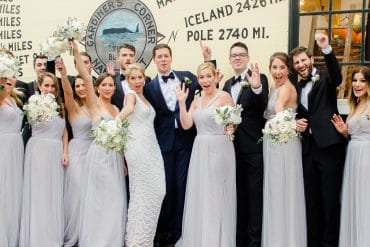The high-seas adventures of one of Nantucket’s favorite daughters, Mya Kotalac.
 When it comes to Nantucket natives, Mya Kotalac is akin to island royalty. Her family line goes back to the very first settlers, with her and her brother Zach representing the tenth generation of Nantucketers. As legend has it, she is a direct descendant of Christopher Hussey, the first islander to ever successfully harpoon a sperm whale more than three hundred years ago. Until that time, only humpbacks were hunted. By slaying the oil-rich sperm whale, Hussey effectively changed the trajectory of Nantucket history.
When it comes to Nantucket natives, Mya Kotalac is akin to island royalty. Her family line goes back to the very first settlers, with her and her brother Zach representing the tenth generation of Nantucketers. As legend has it, she is a direct descendant of Christopher Hussey, the first islander to ever successfully harpoon a sperm whale more than three hundred years ago. Until that time, only humpbacks were hunted. By slaying the oil-rich sperm whale, Hussey effectively changed the trajectory of Nantucket history.
While you won’t find her hurling a harpoon, Mya still possesses a deep connection with the sea that is nothing short of genetic. “We’re oceangoing, island people,” she says. “Growing up, our backyard was the harbor with boats, swimming, surfing.” Mya’s parents, Rick and Melanie, have owned and operated Brant Point Marine for more than forty years, and raised her and Zach in and around the water. While other kids their age headed to the mainland for school vacations, Mya was helping her parents deliver sailboats back and forth to the Caribbean. “We almost took it for granted, but my brother and I developed a deep understanding of the ocean that not many people have,” she says. “It’s almost a sixth sense.”
 Most recently, Mya and her family put their seaworthiness to the ultimate test by sailing from Saint Martin to Tahiti, an eight-month, open-ocean voyage that took them a quarter of the way around the globe. Their departure was originally scheduled for the fall of 2017, but then a Category 5 hurricane named Irma completely destroyed their fifty-foot catamaran, Alexandra, while it was docked in Saint Martin. Rick spent the next six months painstakingly rebuilding the family’s boat by hand. By the fall of 2018, they were shipshape once again and ready to set sail.
Most recently, Mya and her family put their seaworthiness to the ultimate test by sailing from Saint Martin to Tahiti, an eight-month, open-ocean voyage that took them a quarter of the way around the globe. Their departure was originally scheduled for the fall of 2017, but then a Category 5 hurricane named Irma completely destroyed their fifty-foot catamaran, Alexandra, while it was docked in Saint Martin. Rick spent the next six months painstakingly rebuilding the family’s boat by hand. By the fall of 2018, they were shipshape once again and ready to set sail.
The route would take them five hundred nautical miles from Saint Martin to Haiti, where they dropped off humanitarian aid for earthquake victims. They then continued another 550 miles to Cartagena, Colombia and then on to the Panama Canal. They sailed for a thousand miles across the equator to the Galapagos. From Darwin’s fabled islands, the Kotalacs embarked on the long, three- thousand-mile haul to the Marquesas Islands in French Polynesia. A number of people rotated on and off the boat during the nearly seven-thousand-mile journey from the Atlantic to the South Pacific, but only Mya and her father stayed on-board for the entire duration.
“We all romanticize this idea of sailing in really stormy weather,” Mya says, “but in reality, open-ocean sailing is more of a mental game than anything else. It’s the opposite of exciting. You wake up and it’s the same thing every day. It’s like a recurring dream.” Mya always opted for the 3 a.m. to 7 a.m. shift at the helm, so she could watch the sunrise. During those sublimely silent nights when her mind would wander, the tedium gave way to an intimate connection to her surroundings.
 As she wrote in her log during the three-night sail to Haiti, “the full moon fell behind a cloud to the northwest and the Milky Way came into full bloom. Orion was high in the sky and Venus was brighter than ever, directly on our tail a few feet above the water. Bioluminescence was sticking in little glowing globs to the sides of the almas. Once in a while, a horse-sized glob would swing past the boat a few feet under the water, making my imagination rumble about sea creatures.” To see the stars better, Mya reached over and dimmed the GPS chart plotter, but in the process, mistakenly flipped off the autopilot, causing the steering wheel to spin wildly. She jumped to arrest its turn, but before she could reach the wheel, Rick already had it in hand. “He swung us back on course without a flinch,” she wrote in her logbook.
As she wrote in her log during the three-night sail to Haiti, “the full moon fell behind a cloud to the northwest and the Milky Way came into full bloom. Orion was high in the sky and Venus was brighter than ever, directly on our tail a few feet above the water. Bioluminescence was sticking in little glowing globs to the sides of the almas. Once in a while, a horse-sized glob would swing past the boat a few feet under the water, making my imagination rumble about sea creatures.” To see the stars better, Mya reached over and dimmed the GPS chart plotter, but in the process, mistakenly flipped off the autopilot, causing the steering wheel to spin wildly. She jumped to arrest its turn, but before she could reach the wheel, Rick already had it in hand. “He swung us back on course without a flinch,” she wrote in her logbook.
Together, daughter and father gawked at the heavens above. “We saw a meteor shoot by low in the sky, leaving a long red tail,” she wrote. “Flying fish were jumping past and landing on the trampolines. The blackish-blue sky behind me began to turn smoky purple and encroach into my peripherals. Venus rose up with the light as if it were pulling the sun up from the sea. It continued to rise as the sunrise transitioned through the color spectrum, until it was lost in the light of day. And it was 7 a.m., my shift was over.”
 The seven-thousand-mile voyage wasn’t all smooth sailing. Sailing on what’s known as the Coconut Milk Run, their route from Panama to Marquesas typically enjoyed favorable winds and minimal storms. However, about two hundred miles north of Colombia, a major storm emerged on the horizon. “We would have to either go through it or all the way around it,” Mya recalls. “Knowing my adventurous dad, he figured if we just went right through the storm, we’d get a lot of speed from the wind—so that’s what we did.” For the next two days, Mya and her father fought through fifteen-foot swells and thirty-three-knot gusts. Their refurbished catamaran, though seaworthy, was not designed for fending off such rough seas. “We’d climb up these fifteen-foot waves and then slide sideways down them,” Mya says. “If the seas were any bigger, I don’t think we would have made it.”
The seven-thousand-mile voyage wasn’t all smooth sailing. Sailing on what’s known as the Coconut Milk Run, their route from Panama to Marquesas typically enjoyed favorable winds and minimal storms. However, about two hundred miles north of Colombia, a major storm emerged on the horizon. “We would have to either go through it or all the way around it,” Mya recalls. “Knowing my adventurous dad, he figured if we just went right through the storm, we’d get a lot of speed from the wind—so that’s what we did.” For the next two days, Mya and her father fought through fifteen-foot swells and thirty-three-knot gusts. Their refurbished catamaran, though seaworthy, was not designed for fending off such rough seas. “We’d climb up these fifteen-foot waves and then slide sideways down them,” Mya says. “If the seas were any bigger, I don’t think we would have made it.”
After seven months, the Kotalacs finally arrived in French Polynesia, where Nantucket whalers once roamed in search of liquid gold. They spent six weeks exploring the islands, during which time Mya began to process the adventure she’d just logged with her family. “It was like meditation in a way, a mental endurance,” Mya reflects. “I learned a lot about patience and ways of keeping my mind steady when there was nothing to look at.” She continues, “It also taught me a lot about my love for the physical world. It sounds cheesy, but it’s real. I feel more connected to the physical planet now.”
 Ironically enough, in the wake of her high-seas adventures and after graduating from Berkeley, Mya decided to pursue a profession not at sea, but very much on land. Today, she’s working as a landscape architect in Nosara, Costa Rica, a community that’s become a winter enclave for more and more Nantucketers. Employed by John Johnson, another with Nantucket roots, Mya is helping cultivate native plants. “A good friend of mine said to me once that my whole life has been on the ocean, so now I’m trying to root myself in the ground,” Mya says.
Ironically enough, in the wake of her high-seas adventures and after graduating from Berkeley, Mya decided to pursue a profession not at sea, but very much on land. Today, she’s working as a landscape architect in Nosara, Costa Rica, a community that’s become a winter enclave for more and more Nantucketers. Employed by John Johnson, another with Nantucket roots, Mya is helping cultivate native plants. “A good friend of mine said to me once that my whole life has been on the ocean, so now I’m trying to root myself in the ground,” Mya says.
Yet no matter how far she goes or how deep she digs, Mya Kotalac’s roots will always trace back to the island of Nantucket. “I have thought about my legacy on Nantucket a lot,” she says. “It’s up to me to either break this legacy or continue it. But there’s also something kind of romantic about that fact that there were ten generations of us on Nantucket, and they were a good ten generations. But, maybe now, it’s time for a new chapter.”







